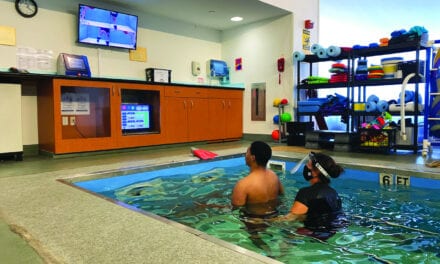
As a campaign slogan in the 2008 presidential campaign, “Hope and Change” helped secure a pretty good outcome for the team that used it. That tag line has been given the year off for the 2012 elections, but could easily be resurrected as the battle cry for The Miami Project to Cure Paralysis, a Center of Excellence at the University of Miami Miller School of Medicine. This research effort is pushing full bore toward a cure for paralysis, albeit through slow, and cautiously regulated steps.
The Miami Project recently was approved to proceed with a phase 1 clinical trial that will test the safety of a procedure that calls for the transplantation of a patient’s own Schwann cells onto the site of spinal cord injury. This is perhaps the best reason to perceive a flicker of hope and change in the arena of long-term rehabilitation and spinal cord injury (SCI) since the shutdown earlier this year of a phase 1 clinical trial at Shepherd Center, Atlanta. That trial, funded by Geron, sought to treat spinal cord injury by direct injection of human embryonic stem cells into the spinal cord. When Geron’s funding ran thin, the trial was shuttered.
Both efforts may seem similar in the re-purposing of human cells as a cure for spinal cord injury. The Miami Project, however, may ultimately prove more fit for survival for three distinct reasons: the type of cells it uses, the ability to leverage insight from the Geron-sponsored research, and, of course, money.
Setting aside the political hot button that sits beneath any use of human embryonic stem cells, Schwann cells may require much less maintenance after transplant than what would be required for injections of embryonic stem cells. Kim Anderson-Erisman, PhD, Director of Education, The Miami Project to Cure Paralysis, explained to me in an email that Schwann cells have the benefit of being obtained from one’s own body, thereby eliminating the need for administration of immunosuppression drugs—as required with embryonic stem cells.
The project’s new treatment may also have implications for multiple sclerosis. According to Anderson-Erisman, one of the things Schwann cells have been shown to do is remyelinate demyelinated axons.
Another advantage for The Miami Project’s efforts are the stepping stones laid by the Geron clinical trial. Anderson-Erisman credits the FDA approval Geron obtained to transplant predifferentiated embryonic stem cells into individuals with SCI as a “major accomplishment” that advanced the entire SCI field.
“We collaborated with many individuals at Geron as well as many other individuals in the SCI field to move our Schwann cell trial forward in the most rational, logical manner. We still have a very effective working relationship with Geron,” Anderson-Erisman points out.
And what about the money? After all, it’s tough to pay the rent with hope and change. As The Miami Project’s phase 1 clinical trial moves forward, it may be prudent to ask whether there is enough capital to sustain it? Anderson-Erisman’s reply to this question is a simple “Yes,” followed by a comment that seems quite self-assured: “As an academic institution, The Miami Project is not subjected to the same pressures as private industry.”
They may also be holding a financial trump card. The Miami Project’s co-founder, Nick Buoniconti, was a Hall of Fame linebacker for the National Football League’s Miami Dolphins and a veteran of that organization’s undefeated 1972 Superbowl team. He is also a member of the Bar in both Florida and Massachusetts. The combination of lawyer-pro football legend seems almost perfectly suited for fund raising. And Buoniconti has some skin in the game: his son, Marc, suffered a C-3, 4 dislocation playing college football in 1985. The incident spurred Buoniconti to help found The Miami Project.
No one is expecting the phase 1 clinical trial or its immediate successors to produce a silver bullet. The Miami Project spokesperson states that the SCI research field—both basic and clinical—does not believe a single intervention by itself will cure paralysis. The organization does believe a combination of neuroprotective, reparative, and rehabilitative strategies will be required to restore the greatest amount of function.
Certainly, The Miami Project has strengths the Geron-sponsored research lacked, and these may be the best reasons of all to view the nascent clinical trial with a renewed hope that treatment for SCI is preparing for change. If the phase 1 clinical trail proves successful, however, it may be at least 10 years before it leads to mainstream medical treatment. In the meantime, the rehab community can maintain high quality of life for individuals affected by SCI by leveraging the continuing advances in technologies associated with mobility and standing, pressure mapping, and seating and positioning. If the door to a cure for paralysis has truly been opened, those who will benefit from it must be in their best possible health when their turn comes to step through it.
—Frank Long



